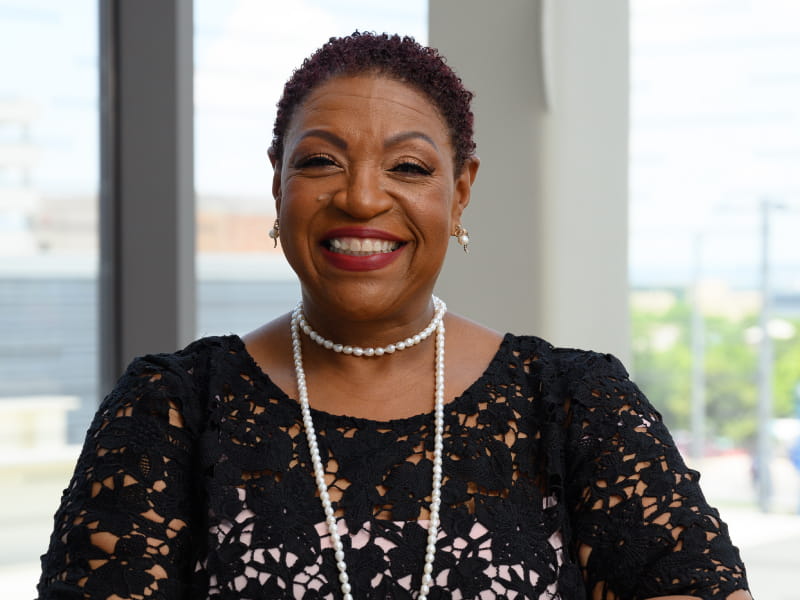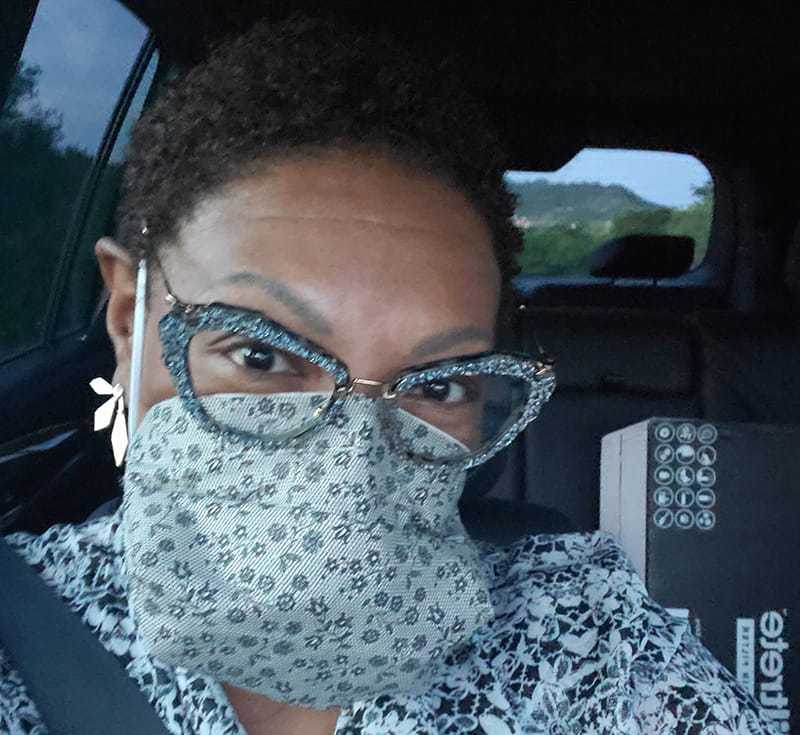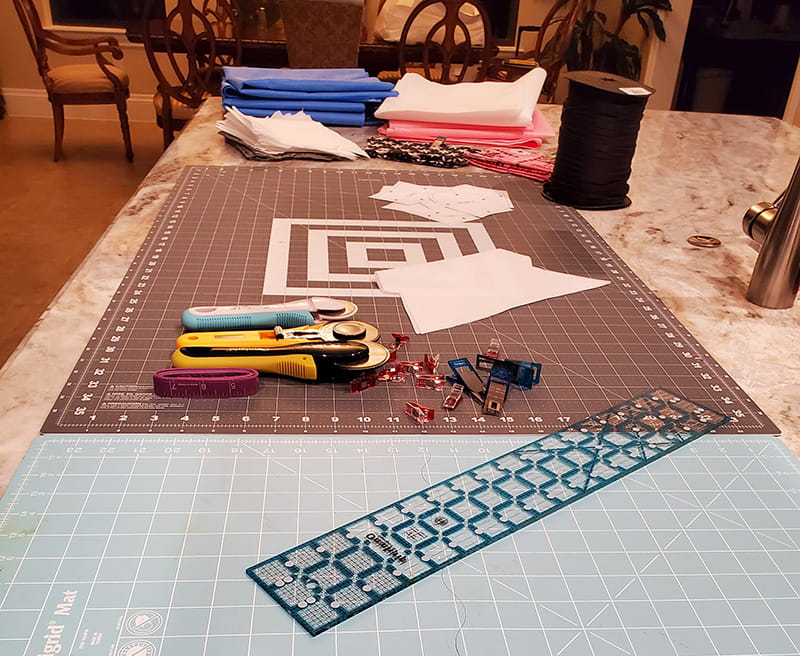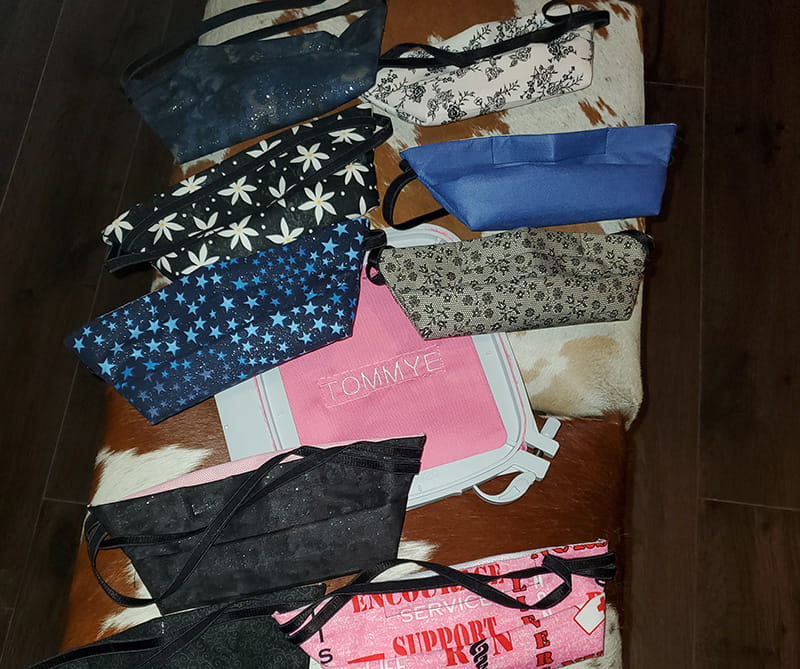This nurse didn't just create a replacement N95 mask – hers filters more
By American Heart Association News

As Tommye Austin made her way around the COVID-19 unit, she saw patients on ventilators fighting for each breath. She heard nurses, respiratory therapists and other workers talking about how anxious they were about being exposed to the coronavirus, and perhaps spreading it to their loved ones.
As the boss of those nurses, Tommye wanted to put them at ease.
Her glimpse of the illness and the fear verbalized by the front-line staff was enough for her to equate the pandemic to war. And, she thought, just like soldiers need proper gear, her crew needed quality personal protective equipment, particularly N95 respirator masks.
Her San Antonio, Texas, hospital was well stocked. But with a surge of cases expected in May, Tommye worried whether there would be enough respirator masks, especially with every hospital in the world seeking them.
Then she remembered what her late husband always said: "If you can't find something and you can't buy something, you make it."
So that's what Tommye did.
– The name N95 comes from the fact the masks filter 95% of airborne particles, such as viruses. Lab results show Tommye's masks block 96.5%.
– N95s weren't intended for all-day use, so they tend to carve painful, unsightly marks into noses, cheeks and chins. Hers don't.
– With nowhere for exhaled carbon dioxide to escape, N95 wearers sometimes suffer dizziness or headaches. Hers have an air pocket so the C02 floats away.
The "TM 2020" – the letters stand for "Tommye Mask" – took about 10 days to create. And 24 hours to become an internet sensation.

Yet the full story of these potentially lifesaving masks is about more than a nurse-scientist building a better mousetrap. It's also the tale of a woman who likes embroidering her unusually spelled name onto everything she can to honor her late husband.
Tommye's resume is crammed with credentials: R.N., Ph.D., MBA and NEA-BC (Nurse Executive Advanced-Board Certified).
Her title is senior vice president and chief nurse executive. Last year, the industry publication Modern Healthcare ranked her the nation's 38th most influential clinical executive. She's on the local board of the American Heart Association and Batz Patient Safety Foundation, and she volunteers with the March of Dimes.
In her rare free time, she's usually at her sewing machine – or, as she calls it, "my fancy computer with a needle." Quilts and throws are her specialties.
Even with all her skills, the challenge of designing an N95 equivalent is something she would've outsourced to her husband, Fermon Austin.
Although he never went to college, Fermon had the mind of an engineer. He once built a machine to remove corn from its husk just to see if he could. He was a do-it-all, blue-collar worker who died last April 2 at age 64 due to heart failure. They were married 15 years and together for 20.
One day early in their relationship, Tommye thought she was helping Fermon by purchasing air conditioning filters for their home in Manvel, Texas.
"He had a hissy fit," she said, laughing. "He was like, 'Why did you buy these cheap things? They're not electrostatic!' And I was like, 'What's the difference?'"
He explained that electrostatic filters were worth the higher price because they carry a charge that zaps more gunk from the air. So, when Tommye went shopping for materials for this project, "I remembered the word 'electrostatic.'"
At about $25 each, Tommye started with 12 filters. She bought three different models, cut through their paper and wire frames, and got to work.

"The efficiency of each model was around the same, but one was more pliable," she said. "It gave your mask a nice shape and was very breathable."
That was more than aesthetic. Her biggest challenge was getting the mask to fit snug over the nose and mouth – but not so tight that it would damage the skin. And it still had to leave room for carbon dioxide to escape.
For more than a week, Tommye came home from work and tinkered practically all night. Her initial $300 purchase was supplemented by another $2,000 worth of gear.
With each iteration, the only way to test for comfort and safety was by strapping it onto her head and testing the mask herself.
"My nephew, Charles, is staying with me," she said. "I told him, 'If Auntie is not awake in 15 minutes, you need to call 911.'"
As she closed in on a prototype, she struggled with the final piece of the comfort-safety puzzle. Then she extended the fabric on the nose and pleated that extension. Voila – more air pocket, no added bulk.
On April 16, a San Antonio TV station ran a story about Tommye's masks.
By the next day, her masks had been showcased by Fox News and the New York Post. The hospital was so inundated with requests for details that it posted step-by-step instructions later that week. At that point, Tommye only had the instructions in her head.
Although the TM 2020 is meant for non-commercial purposes, Tommye has received over 1,500 offers from people willing to buy them. Messages have come from as far as Indonesia and South Africa. On Fridays, she mails masks at no cost to selected people, such as a woman with 10 relatives who are health care workers, three of whom have COVID-19.
Tommye recently was speaking with Tamara Hebert Powell, a friend since elementary school in Rockdale, Texas; their moms grew up together, too. Tamara mentioned that her daughter, Brittany, a nurse in Houston, had been using the same N95 mask for nearly two months.
They spoke on a Saturday. Brittany got a TM 2020 in the mail Monday.
"That's Tommye," Tamara said. "She's extremely smart but also compassionate and empathetic. The caring spirit she shows with family and friends is the same way she treats her staff and patients."
More than 2,400 of Tommye's masks have been made. The goal is 6,500.

Now the big irony: Only Tommye and a few others are wearing them at her hospital. Everyone else is following protocol by using their mask toolkit. She's quick to note that all along her design was meant to be a backup. The staff has access to barrier/surgical masks, N95 respirator masks, face shields, hospital-issued scrubs and plenty of food.
She's even more proud of the fact that her staff has been kept safe from COVID-19, which she's come to call "the invisible monster."
"This is some bad stuff," she said. "It hits all ages. People don't realize how bad it is."
Thanks to Tommye and Fermon Austin, and the TM 2020s, many people will never find out.
If you have questions or comments about this story, please email [email protected].





